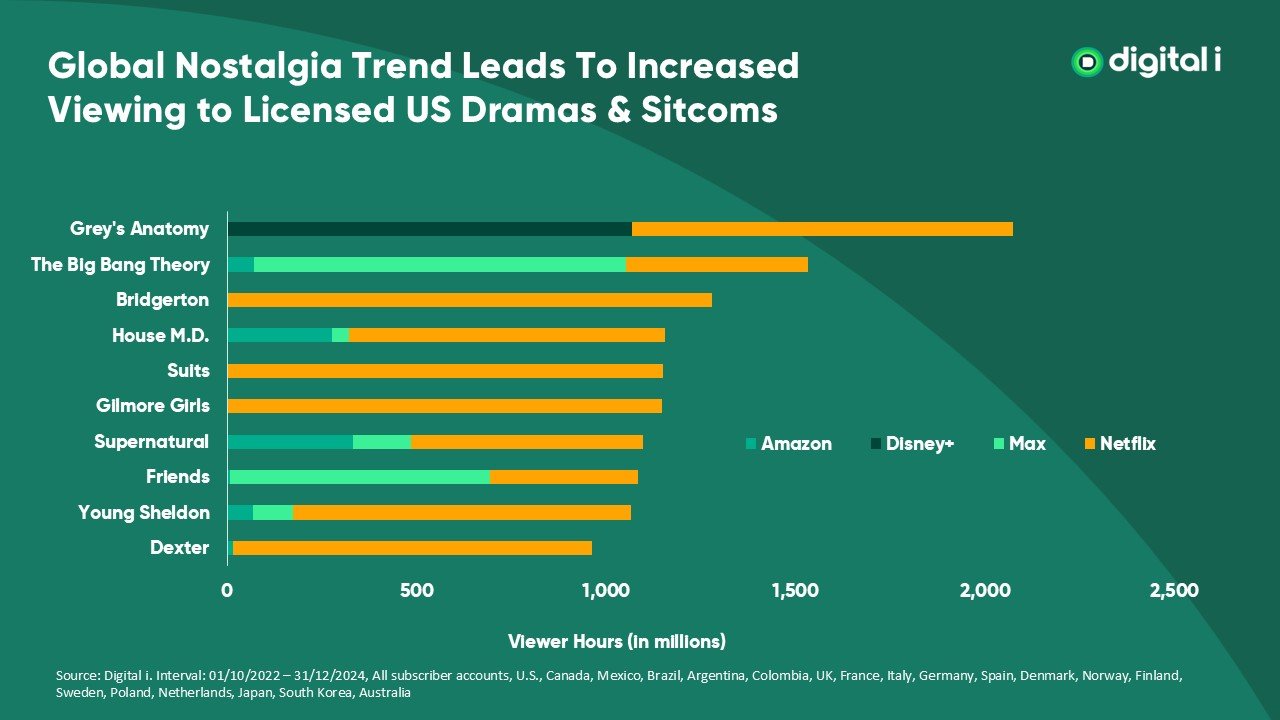Original content is reshaping the streaming industry by fueling subscriber loyalty, strengthening platform identity, and driving cultural influence. As licensing costs rise and competition intensifies, platforms like Netflix, Disney+, and Amazon Prime are turning to exclusive originals as long-term assets. This article explores why original content is the future of streaming platforms, backed by real-world examples, data insights, FAQs, and actionable takeaways.
Introduction
The streaming revolution has changed how we consume entertainment forever. Gone are the days of waiting for weekly TV episodes or browsing through limited cable packages. Instead, today’s audiences expect instant access to thousands of movies and shows at their fingertips.
But as the number of streaming services has exploded, so has the battle for attention. Netflix, Disney+, Hulu, Amazon Prime, Apple TV+, and others are competing for the same finite audience. What makes one platform worth paying for over another?
The answer lies in original content. Whether it’s Netflix’s Stranger Things, Disney+’s The Mandalorian, or Apple TV+’s Ted Lasso, original programming has become the backbone of streaming. It isn’t just entertainment; it’s a strategy, an identity, and the future of the industry.
This blog dives deep into why original content is so vital, how it evolved, its economic and cultural value, and where it’s headed. Along the way, we’ll answer trending questions, showcase real-life examples, and highlight the challenges platforms face in this original-first era.
How Did Streaming Platforms Evolve into Original Content Powerhouses?
Streaming wasn’t always about originals. In its early days, Netflix thrived on licensed shows and movies. Classics like Friends, The Office, and Breaking Bad drew millions of subscribers. However, licensing agreements came with two problems: rising costs and instability.
Studios like Warner Bros., NBCUniversal, and Disney realized they were fueling Netflix’s growth at the expense of their own potential. Soon, they pulled back rights to build their own streaming services—HBO Max (now Max), Peacock, and Disney+.
Faced with losing marquee shows, Netflix pivoted. In 2013, it released House of Cards, its first major original series. Backed by big-name talent and powered by data insights (Netflix noticed high viewer engagement with political dramas and Kevin Spacey films), the show became a smash hit. Critics praised it, audiences binged it, and the streaming industry shifted forever.
From there, Netflix doubled down with Orange Is the New Black, Stranger Things, and The Crown. Other platforms followed suit. Disney leveraged its Marvel and Star Wars universes, while Amazon Prime produced The Boys and The Lord of the Rings: The Rings of Power.
Today, originals are not just one part of the catalog—they are the centerpiece.
Why Do Streaming Platforms Prioritize Original Content Over Licensed Shows?
Licensed shows are temporary; originals are permanent. While a platform may acquire a beloved sitcom for a few years, once the deal ends, so does the audience attachment. Friends leaving Netflix in 2020 sparked subscriber frustration—an event Netflix vowed to avoid repeating.
Originals solve this issue by being:
- Exclusively owned: Originals remain on the platform indefinitely.
- Differentiators: They create unique value. You can only watch The Mandalorian on Disney+.
- Global franchises: Originals inspire spin-offs, merchandise, and even theme park attractions (The Witcher video games, Frozen musical productions).
- Subscriber magnets: New originals generate spikes in sign-ups. Squid Game alone attracted over 111 million viewers within a month of release.
In short, originals are long-term investments instead of short-lived rentals.
How Does Original Content Build Subscriber Loyalty?
Churn—the rate at which subscribers cancel services—is one of the biggest challenges in streaming. A Deloitte survey (2023) found that nearly 57% of U.S. viewers cancel at least one subscription within six months.
Originals help fight churn. Here’s why:
- Anticipation: Episodic releases like The Last of Us on HBO Max kept viewers subscribed for months, waiting for weekly episodes.
- Fandom: Original shows build communities. Fans of Stranger Things or The Witcher engage year-round through social media, merchandise, and conventions.
- Exclusivity: When a must-watch series exists only on one platform, subscribers are less likely to cancel.
Original content doesn’t just entertain—it creates loyalty and belonging.
What Role Does Cultural Relevance Play in Streaming Success?
Cultural relevance is one of the most powerful tools in the streaming arsenal. Originals are not just shows; they are events.
Consider these examples:
- Squid Game (Netflix, 2021) became a global phenomenon, inspiring Halloween costumes, memes, and TikTok trends.
- Wednesday (Netflix, 2022) sparked viral dances and reignited interest in the Addams Family franchise.
- Game of Thrones (HBO) became a global conversation driver, dominating Sunday nights for nearly a decade.
By creating cultural moments, streaming platforms become part of everyday conversations. This visibility attracts new subscribers and keeps current ones engaged.
How Are Streaming Platforms Using Data to Shape Original Content?
Streaming platforms possess a secret weapon that traditional TV networks lack: detailed user data.
They know when viewers pause, skip, or rewatch. They know which genres spike engagement and which actors drive watch times. This data helps platforms greenlight shows with a higher chance of success.
Netflix’s House of Cards was famously greenlit because data showed audiences loved political thrillers and Kevin Spacey films. Amazon’s The Rings of Power was born out of fan interest in Tolkien’s universe.
While data doesn’t replace creative instincts, it minimizes risk and aligns investments with audience demand.

What Are the Economic Advantages of Owning Original Content?
Owning intellectual property (IP) transforms content into a multi-channel asset. Originals aren’t limited to streaming—they expand into ecosystems.
- Merchandise: Disney+ originals like The Mandalorian drive toy sales (Baby Yoda/Grogu merchandise alone generated billions).
- Licensing deals: Netflix can license originals internationally, generating new revenue streams.
- Experiences: Warner Bros. leveraged Game of Thrones into traveling exhibits and attractions.
- Theatrical releases: Netflix’s Glass Onion: A Knives Out Mystery earned $15 million in a one-week theater run before hitting streaming.
By owning originals, platforms aren’t just streaming—they’re monetizing across industries.
Key Reasons Why Original Content Is the Future of Streaming
- Long-term ownership of intellectual property
- Exclusive platform identity and brand-building
- Reduced dependency on expensive licensing deals
- Subscriber retention through fan-driven loyalty
- Cross-industry revenue potential
- Global reach through localized storytelling
What Challenges Do Platforms Face in Creating Originals?
The path to original dominance isn’t easy. Platforms face challenges such as:
- Escalating costs: Blockbusters like The Rings of Power exceeded $700 million for a single season.
- Content saturation: With dozens of originals launching monthly, audiences face decision fatigue.
- Quality vs. quantity: Netflix’s “quantity-first” approach risks diluting brand trust when shows flop.
- Global balance: Originals must resonate with local markets while appealing to global audiences.
Sustainability lies in balancing ambition with execution.
Are International Originals Reshaping the Streaming Landscape?
Yes, international originals are rewriting the rules. Titles like:
- Money Heist (Spain)
- Dark (Germany)
- Sacred Games (India)
- Squid Game (South Korea)
…have proven that subtitles and dubbing are no longer barriers. Audiences worldwide crave fresh, authentic storytelling—even if it comes from outside Hollywood.
This shift marks a cultural globalization of entertainment, where stories travel beyond borders and reshape viewing habits.
How Does Original Content Impact Hollywood and Traditional Media?
Original content has disrupted Hollywood’s traditional dominance. A-list talent now sees streaming platforms as the future.
- Martin Scorsese partnered with Netflix for The Irishman.
- Shonda Rhimes signed a $100M deal with Netflix after leaving ABC.
- Donald Glover struck an exclusive deal with Amazon Studios.
Meanwhile, traditional networks scramble to adapt by launching their own services like Peacock (NBCUniversal) and Max (Warner Bros. Discovery).
Streaming originals aren’t just competing with Hollywood—they’re redefining it.
10 Trending FAQs on Original Content in Streaming Platforms
Q1. Why is original content more valuable than licensed content?
Original content ensures platforms permanently own their intellectual property. Unlike licensed shows that eventually leave, originals build cultural exclusivity, strengthen brand identity, and create long-term value. They differentiate platforms in a crowded market while fostering loyal fanbases that remain engaged even after specific shows end.
Q2. How much do streaming platforms spend on originals?
Spending is massive. Netflix invests about $17 billion annually in original productions, making it the biggest spender in the industry. Disney+ and Amazon Prime also dedicate billions yearly to develop exclusive shows and films. This financial commitment highlights how essential original programming has become for long-term growth and survival.
Q3. Which streaming service has the best originals?
Netflix leads in terms of volume, offering hundreds of original series across genres. Disney+ stands out for its global franchises like Marvel and Star Wars, which drive cultural relevance. Meanwhile, Apple TV+ has fewer titles but is celebrated for critical hits such as Ted Lasso and Severance.
Q4. Do originals reduce subscription churn?
Yes, originals significantly reduce churn. By releasing episodes weekly, platforms like HBO Max with The Last of Us keep subscribers engaged longer. Exclusive originals create anticipation, fan communities, and event-like experiences, giving viewers strong reasons to stay subscribed instead of canceling after finishing a single show or film.
Q5. Why are international originals important?
International originals expand global reach. Hits like Squid Game, Money Heist, and Dark prove that audiences embrace stories beyond Hollywood. Subtitles and dubbing are no longer barriers. These shows bring cultural diversity, attract new demographics, and demonstrate that authentic local storytelling can resonate worldwide, redefining what global entertainment looks like.
Q6. Will AI shape the future of original content?
AI will likely assist platforms with script analysis, audience data insights, and content recommendations. However, human creativity and cultural nuance remain irreplaceable. While AI can streamline production efficiency and reduce risk, it cannot fully replicate authentic storytelling, emotional resonance, or artistic originality. Thus, AI will complement—not replace—creators.
Q7. How do streaming originals affect theaters?
Streaming originals challenge the box office by shifting audiences to on-demand releases. However, hybrid models are emerging, with some originals like Netflix’s Glass Onion having limited theatrical runs before streaming. This trend demonstrates how originals can coexist with theaters, offering flexibility and multiple revenue streams while reshaping viewing habits globally.
Q8. What’s the difference between exclusive and original content?
Exclusive content may be licensed from studios but available only on one streaming platform during a contract period. Original content, however, is created, owned, and produced by the platform itself. Originals remain permanent assets that define the platform’s brand identity and are immune to licensing expirations or disputes.
Q9. Are all originals successful?
Not all originals succeed. While many titles underperform or fail to gain traction, breakout hits like Squid Game, Wednesday, or Stranger Things generate cultural phenomena and enormous returns. Success depends on storytelling, timing, and marketing. Platforms accept failures knowing that a single major hit can drive massive subscriber growth.
Q10. What’s the future trend for originals?
The trend points to fewer but higher-quality productions. Platforms will focus on strengthening franchises, developing cinematic universes, and collaborating globally for diverse stories. International originals will expand, while blockbuster-scale shows compete for attention. Ultimately, audiences can expect originality, authenticity, and culturally impactful projects to dominate streaming for the long-term.
Practical Takeaways for Viewers
- Expect classics like Friends and The Office to stay on studio-owned platforms.
- Originals will dominate as streaming wars intensify.
- Consider “hopping” between platforms to catch must-watch originals.
- Keep an eye on international content—some of the best stories now come from abroad.
Final Thoughts
Original content is no longer optional—it’s the core survival strategy for streaming platforms. As competition rises and licensed libraries shrink, platforms must deliver exclusive stories that create loyalty, spark cultural moments, and generate long-term revenue.
